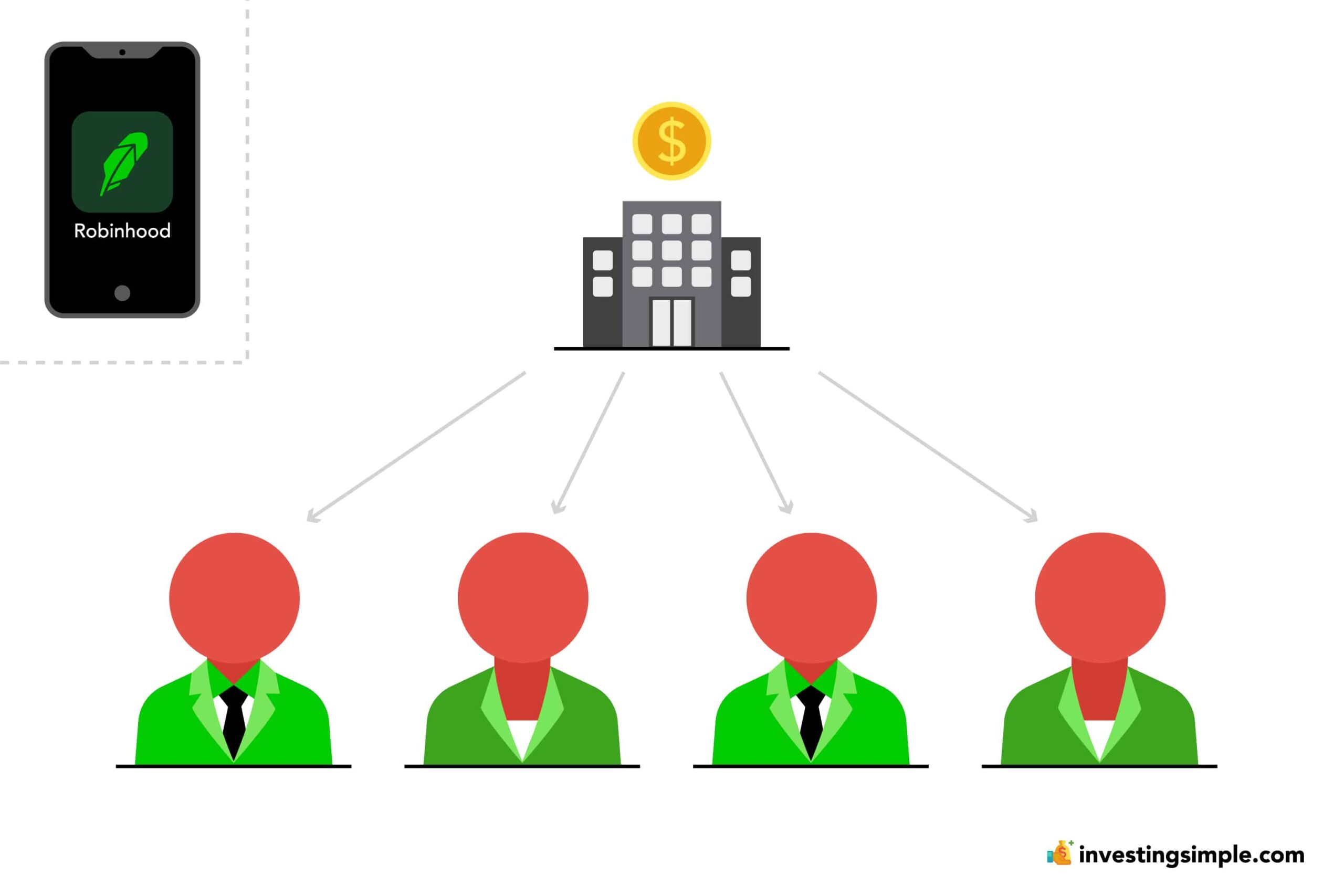





Investing in the stock market can be a lucrative endeavor, offering various avenues for generating returns.
One such method is through dividends, a form of payment made by companies to their shareholders.
Understanding how dividends work and how they are handled on platforms like Robinhood is crucial for investors.
Here's what happens with your earned dividends within the Robinhood app.
New to Robinhood? Check out my full tutorial below!
A dividend is essentially a distribution of a portion of a company's earnings to its shareholders.
Typically, dividends are paid out quarterly in the form of cash, although some companies may choose to issue them on different schedules or in other forms like stock dividends.
Notably, not all companies pay dividends, especially those in earlier stages of growth or with alternative plans for their profits, such as reinvestment in the business.
One of the most important concepts for dividend investors is the ex-dividend date, which determines whether you're eligible to receive an upcoming dividend payment.
To qualify for a company's dividend, you must purchase shares before the ex-dividend date. If you buy shares on the ex-dividend date or later, you won't receive that particular dividend payment.
The good news is that once you've purchased shares before the ex-dividend date, you can sell them on or after the ex-dividend date and still receive the dividend. This provides flexibility for investors who may need to adjust their positions.
On Robinhood, there's a specific timing requirement: purchases must be completed by 8 PM ET the night before the ex-dividend date to qualify for the dividend. This is particularly important for investors trading during extended hours.
For investors using the Robinhood platform, handling dividends is relatively straightforward.
Robinhood automatically processes dividends for its users, crediting cash dividends directly into their brokerage accounts.
This means that shareholders receive their dividends without needing to take any additional action.
Robinhood provides users with convenient access to their dividend activity.
Users can view both received and scheduled dividends within the app:
Here, users can see pending dividends, including the scheduled date and amount, as well as recently-paid dividends. Pending dividends appear with their scheduled payment dates, while recently-paid dividends are listed just below. This allows investors to track their dividend income and plan their investment strategies accordingly.
Understanding when dividends are actually paid is important for cash flow planning. The timeline varies depending on whether you're receiving domestic or foreign dividends.
Domestic dividends are typically credited to your account at the end of the trading day on the official payment date. These dividends will show as "Pending" in your account until they're paid.
Foreign dividends take a bit longer to process. They're usually credited 2-3 business days after the official payment date. Unlike domestic dividends, foreign dividends don't show as pending—they only appear in your dividend history after they've been credited to your account.
Because of regulatory requirements, there's typically a waiting period of at least 10 days between when a company announces a dividend (the declaration date) and when the dividend is actually paid out to shareholders (the pay date).
Robinhood's fractional shares feature has made investing more accessible by allowing investors to buy portions of expensive stocks with as little as $1.
If you own fractional shares of a dividend-paying stock, you'll receive a proportional dividend based on the fraction you own. For example, if you own 0.5 shares of a stock that pays a $2 dividend per share, you'll receive $1.
Fractional dividend payments are rounded to the nearest penny. Any dividend-paying stock or ETF that supports fractional shares is also eligible for dividend reinvestment through Robinhood's DRIP program.
One feature offered by Robinhood is Dividend Reinvestment, commonly known as DRIP.
With DRIP enabled, investors have the option to automatically reinvest the cash received from dividend payments back into the underlying stocks or exchange-traded funds (ETFs) from which they originated.
This can be a useful strategy for compounding returns over time, as reinvested dividends can purchase additional shares, potentially increasing future dividend payments.
Enabling dividend reinvestment on Robinhood is a straightforward process:
Once enabled, any cash dividends received from dividend-reinvestment eligible securities will be automatically reinvested according to your preferences.
Understanding the precise timing of dividend reinvestment is crucial for managing your DRIP settings effectively.
Dividends are reinvested during market hours (9:30 AM to 4 PM ET) on the trading day after the dividend pay date. Because it takes time to process the reinvestment orders, your dividend may not be reinvested immediately at market open, but you'll receive a notification when the reinvestment is complete.
The cutoff time to enable or disable dividend reinvestment is 12 AM ET on the day the dividend is scheduled to be paid. For example, if you're receiving a dividend on February 5th and want it reinvested, you must enable dividend reinvestment before 12 AM ET on February 5th. If you miss this deadline, the dividend will be paid out as cash instead of being automatically reinvested.
This gives you flexibility in deciding whether to reinvest each dividend payment, but it requires planning ahead to ensure your preferences are set before the cutoff.
While uncommon, there are situations where dividends may be reversed or adjusted after they've been paid to your account.
The most common scenarios include:
Rate Corrections: If a dividend rate is updated after payment was made, Robinhood will reverse the inaccurate dividend and repay using the correct rate. These rate changes are determined by the issuer, not by Robinhood.
Dividend Recalls: Dividends may be recalled by the DTCC or by the issuing company. While rare, if this occurs, the dividend will be reversed from your account.
You can view any reversed dividends in the History → Dividends section of the app, as well as on your monthly investing account statement. This transparency helps you track all dividend activity, including any adjustments.
Understanding the tax treatment of dividends is essential for maximizing your after-tax returns. All dividends are taxable income, even if you reinvest them through a DRIP program.
Dividends are classified into two main categories:
Qualified Dividends: These receive preferential tax treatment with rates of 0%, 15%, or 20% depending on your income bracket. To qualify for these lower rates, you must hold the stock for more than 60 days during the 121-day period that begins 60 days before the ex-dividend date.
Ordinary Dividends: These are taxed at your regular income tax rate, which can be significantly higher than qualified dividend rates.
Certain investments have special dividend tax treatment. Real estate investment trusts (REITs) and master limited partnerships (MLPs) typically don't pay qualified dividends, meaning their distributions are usually taxed at ordinary income rates.
At the end of each year, you'll receive Form 1099-DIV from Robinhood documenting all dividend income for tax reporting purposes. This form will show the breakdown between qualified and ordinary dividends.
While waiting to reinvest dividends or between investments, consider that uninvested cash in your Robinhood account can also earn returns.
Standard Robinhood accounts earn approximately 0.25% APY on uninvested cash. However, Robinhood Gold members (which costs $5 per month) can earn between 4.5-5% APY on their uninvested cash balances. For dividend investors who may hold cash between investments or while waiting for buying opportunities, this enhanced interest rate can add up significantly over time.
This feature makes Robinhood Gold particularly attractive for investors who maintain cash balances alongside their dividend-paying securities.
Do I owe taxes on reinvested dividends?
Yes. Even if you reinvest your dividends through a DRIP program, you still owe taxes on them in the year they're paid. The reinvestment doesn't defer or eliminate the tax obligation.
Can I sell my shares immediately after the ex-dividend date?
Yes. Once you've purchased shares before the ex-dividend date, you can sell them on or after the ex-dividend date and still receive the dividend payment.
Why might my dividend not be reinvested?
Common reasons include missing the 12 AM ET cutoff time on the payment date, corporate actions affecting the security, or market conditions that prevent the purchase.
Which investments are eligible for DRIP?
Any dividend-paying stock or ETF that supports fractional shares on Robinhood is eligible for dividend reinvestment.
Do fractional shares earn dividends?
Yes. Fractional shares earn proportional dividends based on the fraction owned, rounded to the nearest penny.
Robinhood's dividend handling features provide investors with flexible options for managing their dividend income, whether receiving it as cash or automatically reinvesting it for compound growth. Understanding the timing requirements, tax implications, and various features available can help you make informed decisions that align with your investment strategy and goals.
If you want to learn more about Robinhood, check out our full beginner's guide about how Robinhood works here.